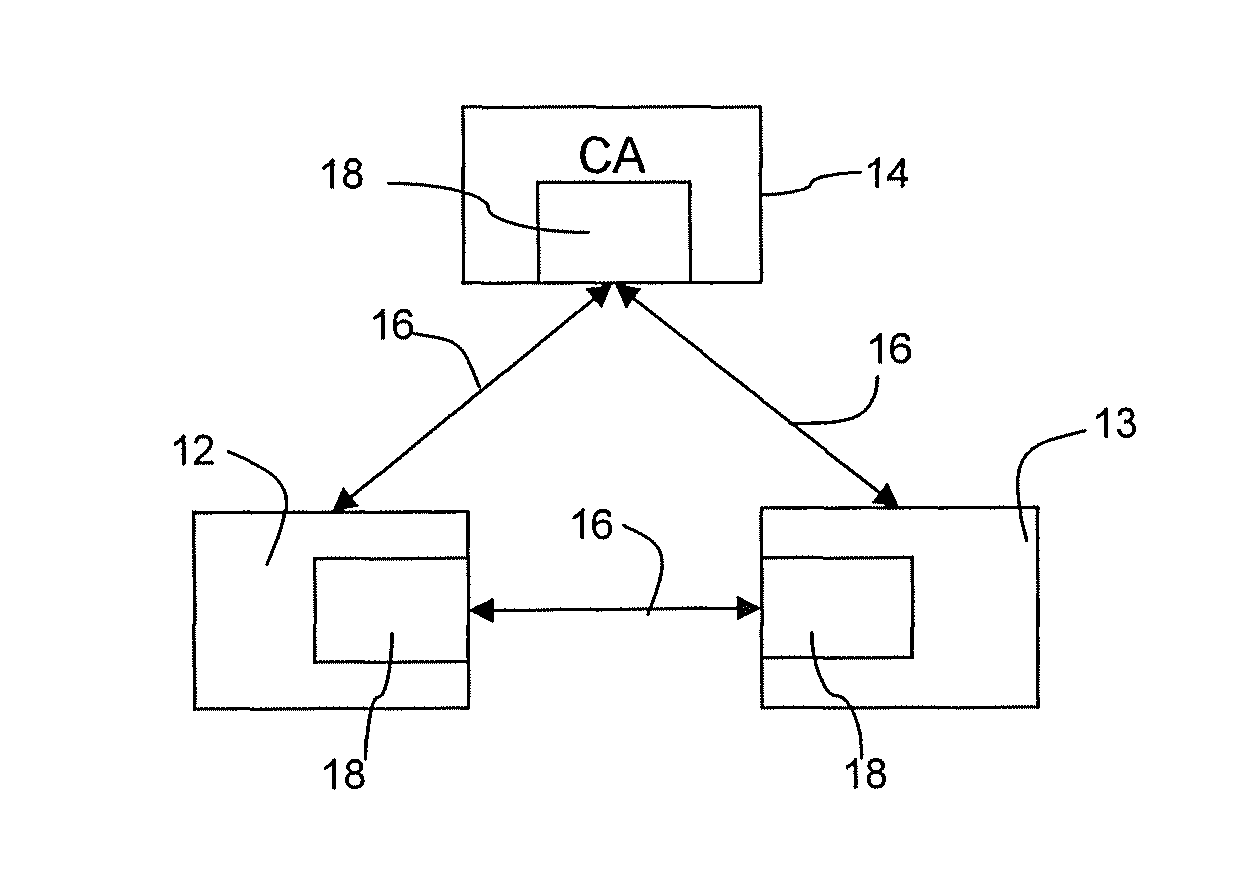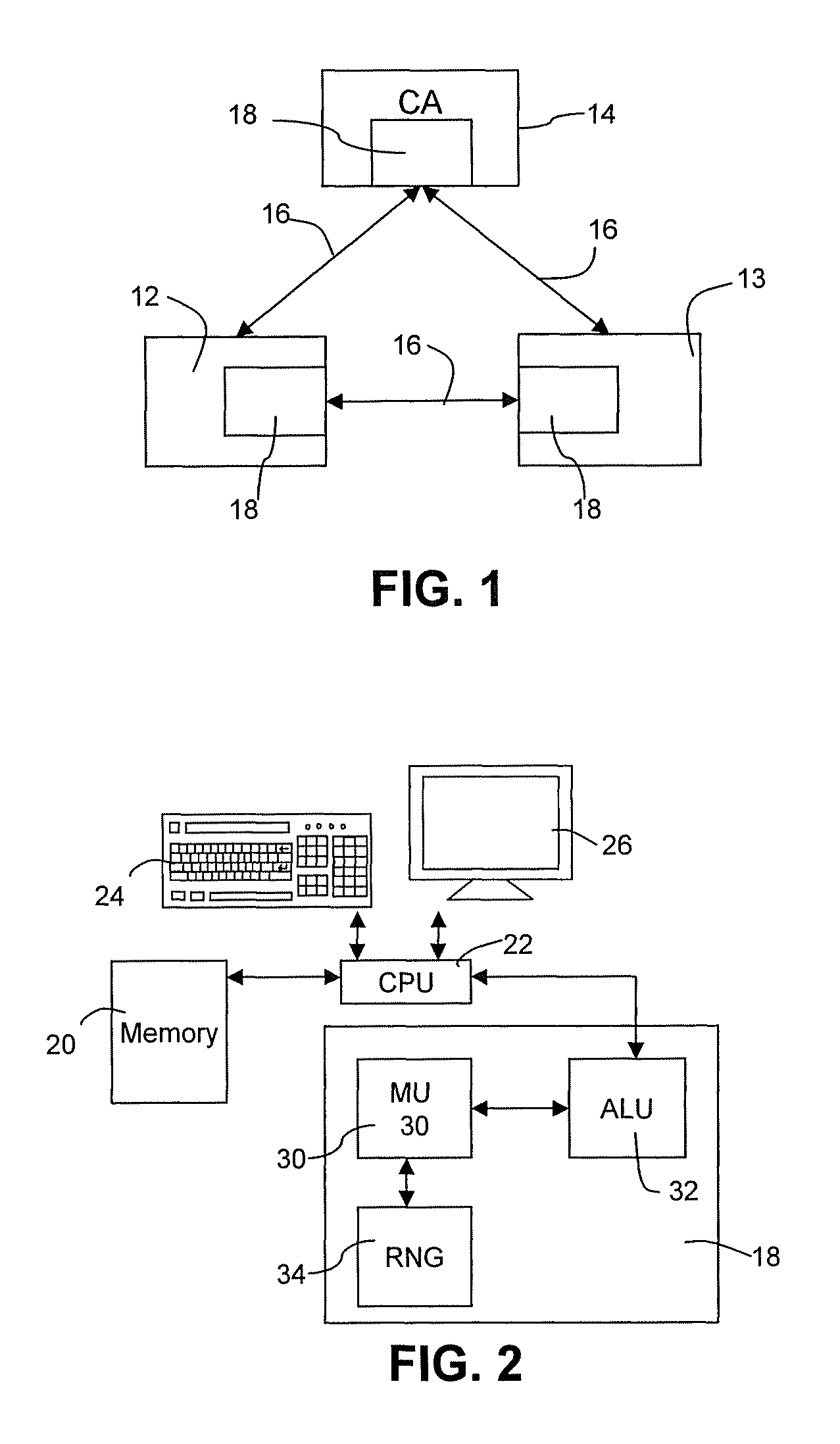Masking the output of random number generators in key generation protocols
a random number generator and key generation technology, applied in the field of cryptography, can solve the problems of low computational efficiency, low efficiency of algorithmic solutions, and weak random number output of random numbers of rngs
- Summary
- Abstract
- Description
- Claims
- Application Information
AI Technical Summary
Problems solved by technology
Method used
Image
Examples
Embodiment Construction
[0019]In general terms, the following provides a technique for masking the output of a random number generator (RNG). In one embodiment, the output of this RNG is used by a correspondent as a private value, for example, an ephemeral private key. The correspondent then generates a corresponding public key. However, direct scrutiny of this public key (which could lead to exposure of the corresponding private value due to a weakness of the RNG) is avoided during transmission by encrypting the public key with a deterministic encryption scheme, such as RSA, before distributing the public key in a public manner. The deterministic encryption scheme does not rely on the output of the RNG for its strength and therefore effectively masks the public key and the private value used to generate the public key.
[0020]The encrypted public key is received by a trusted party who can decrypt it and recover the public key. The trusted party utilises the public key in combination with other information t...
PUM
 Login to View More
Login to View More Abstract
Description
Claims
Application Information
 Login to View More
Login to View More - R&D
- Intellectual Property
- Life Sciences
- Materials
- Tech Scout
- Unparalleled Data Quality
- Higher Quality Content
- 60% Fewer Hallucinations
Browse by: Latest US Patents, China's latest patents, Technical Efficacy Thesaurus, Application Domain, Technology Topic, Popular Technical Reports.
© 2025 PatSnap. All rights reserved.Legal|Privacy policy|Modern Slavery Act Transparency Statement|Sitemap|About US| Contact US: help@patsnap.com



